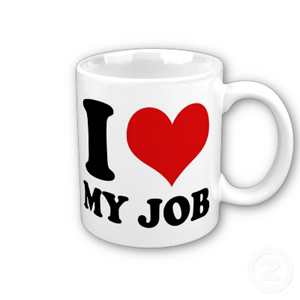


How to Build a Company Culture That Matters to Employees
Dominique Jones

Organizational culture is
being talked about a lot more now as businesses realize its importance in attracting and retaining the right people. We often see perks related to lifestyle and health benefits being actively promoted on a company’s website or social media, including gym memberships, standing desks and vacation allowances. Other work-enhancing benefits, such as free coffee, snacks and catered meals during the workday are also considered a big draw.

| |
Dominique Jones
| | |
However, it’s important to distinguish culture from perks because what I just mentioned are just that – perks. And, like any topic that starts to get attention for the good it can do for a business, there’s potential for misunderstanding what it truly means.
The culture of an organization encompasses the values, beliefs, behaviors and feelings held by its people. And whether you’ve taken steps to define it or not, culture exists.
Perks are those lovely and often fun benefits that companies provide to employees to enhance compensation. Perks are all wonderful and important, but they don’t represent your organization’s culture. Instead, they may reflect your culture.
For example, let’s say your organization values flexibility. As a perk, you might provide flexible working hours, time off for appointments and for parents to attend children’s events. But the value of flexibility also relates to how we work, where we work and our perceptions of what others are doing. Living the value of flexibility in your culture means letting employees work from home when they’re waiting on a repairperson or delivery, or by providing them with the right technology to collaborate online.
Perks are nice but, according to research from HRMA, if you’re looking for ways to build a culture that encourages and supports high performance, you should focus on developing and nurturing employees.
Here are five things to keep in mind as you build a high-performance culture in your organization:
1. Building a high-performance culture is an intentional process
You can start an internal campaign promoting values but if people don’t actually live those values in the workplace, they’re just pretty words. Inspire the behavior changes by building the cultural values into your core competencies. Then make sure that your leaders understand, live and encourage the values in the people around them.
2. Continuous feedback helps reinforce cultural values
Managers can influence their team to live your company’s culture through regular check-ins. The most effective leaders take time to get to know their employees so they can communicate and motivate in the way that works best for each person. They should use best practices for giving feedback to tell employees the specifics of why their actions matter, the impact on others or the organization and how their behavior and work impact the organization in achieving its goals and maintaining its culture.
3. Communication needs to be a two-way conversation
It takes a lot of trust for an employee to step up and challenge, question or express concerns to leaders. But that’s the kind of back-and-forth conversation that builds a solid culture of high performance. Invite employees to speak up. Let them share their ideas, their thoughts, their concerns about you, the team and the organization. Take time to listen and consider the insights you’re gaining – they’ll help you be a better coach for employees and lead to better, more meaningful conversations.
4. Employees should be given opportunities for development
When you build your cultural values into your core competencies, it gives managers and employees the opportunity to develop behaviors to support the culture. When you set goals and development plans, look for opportunities to develop competencies in employees that will help build a stronger culture.
5. You’re human and so are your employees
High expectations are motivating to high performers. But it’s important to keep high expectations in check because they also need to be realistic. Creating a belief that perfection is required will damage trust and cripple innovation. Failure will happen. Employees should be encouraged to do their best and turn mistakes into opportunities to learn.
Influence a culture employees will be proud of
When you keep the needs of employees in mind, you’ll be able to build a culture that they can be proud of and support. Culture is about creating a feeling and experience for employees – it’s what energizes them to get to work in the morning.
The perks are nice and they’re important in their own way, but they aren’t the key to a great company culture. Instead, focus on giving employees regular, meaningful feedback and coaching, and make development a priority to encourage high performance. Your perks may attract the right talent, but your culture has a big impact on how long you keep them.
Dominique Jones is Chief People Officer at Halogen Software. She provides practical insights that help businesses tap into individuals’ strengths to build great teams that achieve their goals.
|


























